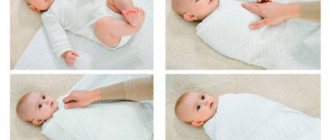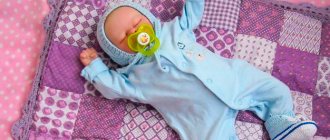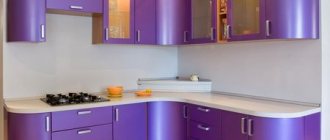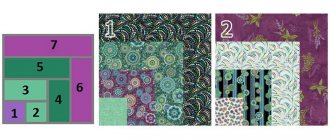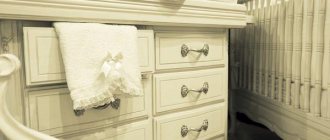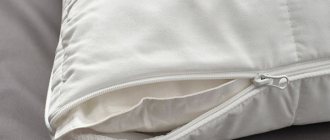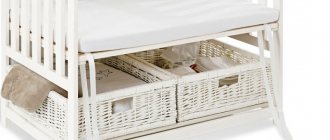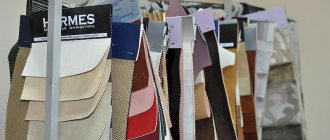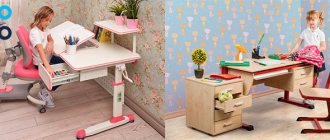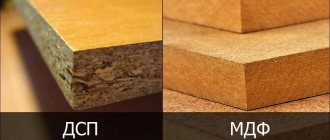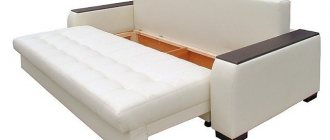To ensure a comfortable life for a newborn, you need to take care of many things. One of them is healthy sleep, which is impossible without the right baby blanket. This article describes in detail how to make the right choice of blanket for newborns.
Today in textile stores you can find a wide selection of children's blankets.
General requirements for blankets for newborns. How to choose?
A small child should be dry, comfortable, cozy and warm under a blanket.
Newborns are sensitive - therefore, the choice must be approached with all responsibility. To create a safe environment for your baby, you need to ensure that the blanket meets certain requirements.
- Temperature. The warmth of the product must correspond to the temperature regime - the baby should not freeze or overheat. If the baby is born in the summer, a light option during the first months is sufficient. If in winter, buy two options. Light for indoors, warm for walking.
- Size. Don’t choose one that’s too small—it won’t cover your baby completely. You can’t choose too big - this will interfere with the child’s movement.
To make it easier to understand which size to choose, you should start from the size of the crib when choosing a blanket to fit its dimensions - Weight. A product that is too heavy can prevent the baby from breathing and lead to many problems.
- Softness. Hard materials may irritate your child.
- Hypoallergenic.
- Air exchange. The blanket should provide warmth, but at the same time allow the skin to breathe.
- Moisture exchange. The material must quickly absorb moisture and evaporate it.
- Environmental friendliness. Avoid harmful toxic materials.
- Easy to care for. When purchasing, consult the seller and ask him about care. Children's bedding needs constant washing, so avoid options where it will be a big problem.
Blankets for newborns are the very first blankets for a baby.
When choosing a blanket for a newborn, carefully monitor whether the child has any allergic reactions. Then you should avoid down, wool, and fur products, so as not to accidentally harm the child. Do not buy cheap market products, it is better to purchase it in a company store, always with a quality certificate. If the seller refuses to provide one, find another one, do not risk the health of your child. Remember that one option is not enough - you need at least two. One is to use at home, the other is to use while walking. Even if your baby was born in the summer, he will most likely need a warm outdoor blanket in the fall and winter. Buy blankets that are a little larger in size for the next season, as the baby will grow during this time. It’s also better to buy two products for home – warm and lighter. Don't buy blankets with large piles that fall out easily, lots of toxic dyes, or large pieces that your newborn might touch. Choose warm, sunny colors, avoid aggressive ones. Cool colors can make your child capricious, too bright ones can scare them, while calm and warm colors, on the contrary, will delight the child.
Any product that comes into contact with the child’s body must be made taking into account certain requirements so as not to harm him
Choice for the summer
In summer, do not wrap your baby in a warm blanket. Overheating is even more dangerous for a child than hypothermia. A baby blanket should be very light, almost weightless, made from pleasant soft fabrics, breathable and hygroscopic. Which blanket to buy for a newborn for the summer season?
Baykovoe
Flannelette blankets are made from natural material and therefore are often purchased for the summer. Their advantages include:
- hypoallergenic;
- lungs;
- soft;
- breathable;
- colorful;
- washes well;
- durable;
- inexpensive.
Calico
Calico is considered an ecological material that combines:
- ease;
- durability;
- almost does not wrinkle.
Fleece
A fleece blanket is a knitted fabric. An airy fleece blanket will create a comfortable temperature regime. The advantages of such a product include:
- ease;
- easy care;
- not subject to biological destruction.
- dry quickly.
When choosing a fleece item for a child, you need to know that fleece absorbs dust and therefore can cause allergies.
Woolen.
How to care?
There are labels on the tags or packages for the care of blankets made from different materials.
Caring for a blanket depends entirely on the material. Read carefully the cleaning rules for the planned material on the Internet, on the label or from the seller. Knowing some simple rules will help you avoid accidentally ruining your baby blanket. Try not to buy complex materials - you will only spend too much. General requirements: avoid high temperatures, carefully straighten the padding when drying, and periodically ventilate the product to remove excess odors.
Popular manufacturers
When choosing a blanket for your baby, give preference to manufacturers focused on producing only high-quality items. Among the main ones we can note:
- “Fleece Factory”, Russia – winter options for bedding made from camel, alpaca, and sheep wool.
- “Mona Lisa”, Russia – bright fleece blankets with images of cartoon characters.
- Naturek, Russia - high-quality children's bedding lines filled with silk, wool, down, bamboo, and eucalyptus fibers.
- “Ermolino”, Russia – blankets made from natural raw materials.
- TAS, Turkey - products for small children, made of synthetic filler, in beautiful bright colors.
- MEYCO, Germany – high-quality durable cotton blankets.
- “Kajka”, Poland – a collection of cotton children’s blankets with padding polyester filling.
- Magic Wool is a collection of blankets and rugs made from sheep and camel wool.
- MuzaNoche has released a line of BabySilk textile items, which uses natural silk.
- Primavelle - produces high-quality children's textiles using all the materials described in this article.
- “Happy Linen”, Ukraine – uses natural materials with linen filling in the manufacture of blankets.
The warmth of the blanket
The degree of warmth (the warming qualities of blankets) is very often displayed on the packaging of the blanket in the form of dots
The heat level can be determined by reading the label. There are several points indicated there, from one to five. Determine by their number.
- One point. A lightweight option, suitable only for warm summer weather.
- Two points. An ordinary light blanket. Can be used for walking during cool summer days or at home.
- Three dots. Option for warm autumn or spring weather. Medium option for medium temperatures.
- Four points. Warm option. Suitable for late autumn, early spring, late-early winter. It warms well, but in severe frosts it is not enough.
- Five points. The warmest option. It will warm your child in cold weather, preventing him from catching a cold or getting sick.
Fillers and materials
The blanket can be fabric or stuffed with filling. In any case, you need to pay attention to the material. We initially bought synthetic products for our daughter. Holofiber padding, knitwear on top. The blanket was immediately prepared and warm for walks. But he was then sent to the floor when we started to sit. We walked in wool (thanks to the grannies!). Fortunately, there were no allergies, so I was satisfied! Just right in cold weather!
In general, there are 2 types of bases:
- Synthetics. Don't be afraid of this word! Naturalness is good, but in this case it can easily provoke allergies. For the first time it is better to try artificial ones.
- Natural. Wonderful choice! If only all sorts of bugs didn’t like to live here. Because of this, blankets require careful care to prevent animals from getting their hands on them. Adults can be destroyed by washing and steaming. But their eggs are not always there.
These species are then divided into winter and summer. What do manufacturers offer? What bases are used? Let's first look at the variations for winter.
Transformable blanket
An envelope blanket is a useful transformer that will come in handy both on a walk and at home
Convenient, practical thing. It combines a blanket and an envelope for a newborn. You can turn the first into the second in different ways - with zippers, buttons, snaps, ribbons. This option is ideal for outdoor walks in cold weather.
Envelope blanket with down filling for winter walks
The outer layer of products is usually made of waterproof materials, and the inner layer is made of soft, pleasant to the body. Your baby will be dry and warm in this product.
The outer part of the blanket is waterproof raincoat fabric with water-repellent impregnation, the inner part is warm, soft milky fleece
With basic sewing skills, you can sew a transformable blanket with your own hands. It can be used as a classic blanket, as an envelope for discharge and for walks, or as a play mat or mattress pad. The requirements for such products are the same as for others.
Multi-colored envelope blanket, made with love by your own hands
Varieties
Baby blankets come in open and closed types, of different weights and compositions. A blanket for a newborn in summer should be light.
Warm models are produced for the cold season. For the winter period, it is better to choose a product made of fur, down, wool or padding polyester. Knitted, cotton, fleece or flannelette models are suitable for autumn.
In hot weather, it is better to use light blankets with good hygroscopicity - made of fleece, bamboo, jacquard, flannel, cotton.
Wool models
Made from camel, sheep, merino and goat wool. The top of the blanket is covered with thick natural fabric. There are knitted products that are more suitable for walking outside. They look original. The only drawback is that they can cause allergies. Children with individual intolerance to woolen items are not recommended to buy such blankets.
Quilts
They are in great demand because they are made from cotton wool. They warm well. Environmentally friendly products. Excellent moisture absorption. They are easy to care for. The disadvantages include: relatively heavy weight, the blanket can change shape after washing and takes a long time to dry. They often cover children during a walk, and also lay them on sleds in winter.
Synthetic products
Various artificial fibers can be used as filler: ecofiber, holofiber, synthetic winterizer, silicone, Thinsulate. They provide comfort and are pleasant to the touch. They are characterized by low cost and good quality. Keeps you warm. The products can be washed frequently and dry quickly. The main disadvantage is considered to be poor hygroscopicity.
Made from fleece
The products are characterized by light weight, comfort, and do not cause overheating of the body. The downside is the ability to accumulate dust, which can cause an allergic reaction. The blanket is easy to wash. Dries quickly.
From calico
Products are light in weight and soft to the touch. They retain their original appearance for a long time. Contains natural fibers. Most often used in summer in cool weather to warm the baby.
Made from fluff
Made from swan or goose down. The cover is sewn from dense natural fabric and quilted. The models are light in weight and have good hygroscopicity. They let air through and keep you warm. In cool weather, the child is covered during a walk. Disadvantages: delicate care is required, during washing the filling gets lost, the item becomes deformed and takes a long time to dry.
Made from bamboo
Summer and demi-season models are made from bamboo. The products do not cause allergic reactions and do not lose their original appearance for a long time. The only negative is the high price.
Knitted products
Convenient to use while walking or visiting. They are characterized by lightness, original appearance and a long period of operation. Made from threads of both natural and synthetic origin. Easy to wash and dry.
It is not advisable to choose a small size blanket for a newborn, because intensive growth is observed in the first year of life. It is better to be guided by the parameters of the crib. The minimum width is 60 cm and the length is 120 cm.
Attention. These sizes are not suitable for walking. It is difficult to wrap a child in such a product.
The optimal options for a crib are the following sizes: 80 by 100 cm, 90 by 120 cm, 115 by 105 cm, 135 by 100 cm. Blankets with parameters 110 by 140 cm have been used for several years.
Flannel blankets for newborns are popular. This pile material is soft to the touch. The composition varies. Products are made with the addition of wool and cotton. Sometimes natural fibers are combined with a small amount of synthetics, such as viscose.
This is useful to know
An envelope blanket is suitable for discharging a newborn from the hospital. There is a large selection of these for all weather conditions, from different fabrics, with clasps, rivets and buttons. The product should not cause discomfort to the child.
Blanket sizes
Approximate ratio of crib sizes, bedding and child’s age
The choice should depend on the size of the baby and the crib. Blankets for the next seasons are usually bought a size or two larger, since the child will grow noticeably in a few months. The smallest option is 60 by 120 centimeters. It is not very practical - you cannot wrap your baby in it on a walk, and after a few months he will be too small to sleep. The most common options are 135x100 cm, 105x115 cm, 90x120 cm, 100x80 cm. It is better to buy a size for growth, and not exactly in size - at the beginning of their lives, children grow very quickly, and the purchased blanket may become too small after two months. The largest option is 110x140cm, which can even last for a couple of years. But you can make such a choice only if you have a large enough crib or if your baby is large - such a large product will only bring discomfort to miniature children.
DIY baby patchwork blanket and crib pillow
When choosing a blanket for your newborn, you are choosing how comfortable he will feel most of the time. But don’t be alarmed – thanks to this article, you can easily choose the ideal option for your baby.
Choice for winter
The main condition for choosing a winter option is warmth and good air circulation. It shouldn't be too hot or too cold under the winter blanket. Which blanket to choose for a newborn for the winter season? Common options for winter include wool, down, synthetic, bamboo and cotton wool.
Woolen
Wool blankets for small children are made from camel and sheep wool. These can be blankets or quilts. Quilted ones are preferable, since the wool in them is evenly distributed, does not bunch up and does not cake after washing. Its advantages also include:
- ease;
- heat;
- durability;
- hygroscopicity;
- breathability.
The disadvantage is allergenicity. If your baby develops an allergy or skin irritation after contact with a woolen product, you should immediately stop using it. Woolen items can harbor moths.
Down
Bird down (swan, goose, loon) is used to fill duvets. It has good quality characteristics:
- ease;
- breathability;
- They keep you warm.
Downy.
It is recommended to use a duvet at room temperatures from +16 to +18 degrees Celsius. If used in a warmer room, the baby may overheat.
Synthetic is not always bad!
Currently, many people believe that a synthetic blanket is inferior in its characteristics to models made from natural fillers. But you shouldn’t listen to “experienced” mothers, grandmothers and great-grandmothers, because times change, and with them technology. There is no need to be afraid of synthetic fillers, especially if your child is allergic to natural fillers. And natural things can often cause allergies! Such blankets accumulate dust and moisture - bacteria and microorganisms quickly multiply there, and the cost of cleaning them is higher.
Other advantages:
- A synthetic blanket is easier to care for and can be machine washed without worry.
- High-quality synthetic materials are not inferior in quality to natural ones, and sometimes even superior - they perfectly remove moisture, retain heat, are lightweight, and have no odor (unlike wool, for example)
- The cost of this product is lower. The child grows quickly, so the blankets will have to be changed often, as a result of the affordable cost of these models, you will spend less money.
To purchase a quality item, we advise you to contact trusted stores with positive customer reviews, as well as give preference to products from well-known, reliable manufacturers.
Easier options
They are called summer ones conventionally. In fact, at a comfortable home temperature they are also used in the cold season. Such bedspreads without filling are presented in the form of blankets.
- Fleece. My favorite material. It conducts air well, gentle and airy. We cover our daughter in the off-season and when there are no severe frosts.
- Flannelette. They used to be popular. Practical and lightweight, consisting mainly of cotton. By the way, they do not cause allergic reactions!
- Linen. Expensive, but beautiful in the heat! There are kids who demand shelter even in the heat! For such a case, you can’t think of anything better than flax.
- Silk. A worthy competitor to flax, even more wear-resistant.
Although children quickly outgrow things, the goods must be of high quality. After all, they have more than one wash to do!

